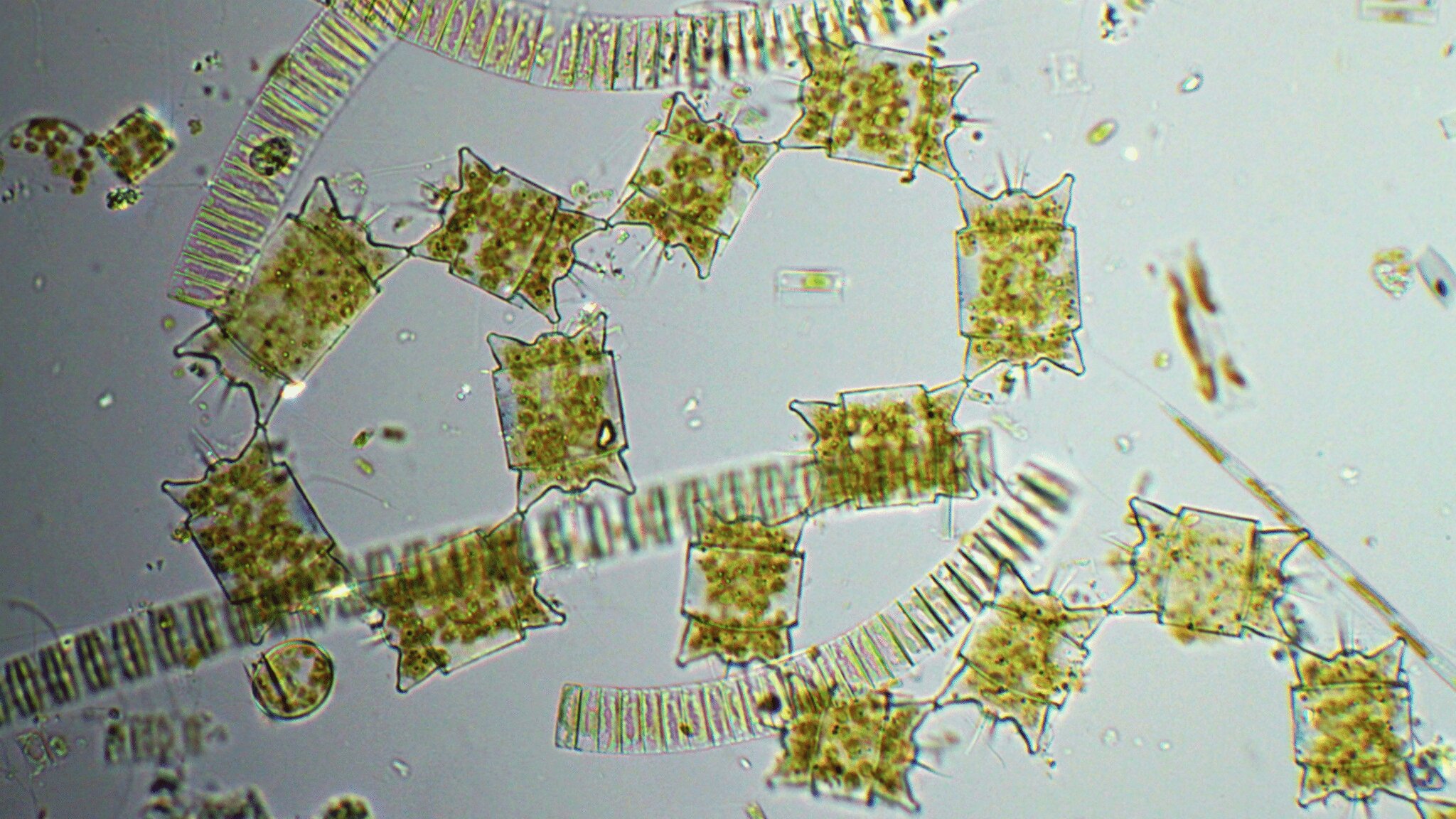Small photosynthetic algae are a key component of the Arctic marine ecosystem.
Phytoplankton are free-floatingmicroscopic organisms, most of which are unicellular algae. Like land plants, they use photosynthesis to turn light into energy by consuming carbon dioxide and nutrients from the water. Phytoplankton form the backbone of the marine food web and play a vital role in the carbon cycle by absorbing CO₂ from the atmosphere.
About 10 years ago, most scientistssuggested that phytoplankton remained in stasis (stagnation) throughout the winter and spring, until the moment the sea ice broke up. There is now growing evidence that phytoplankton blooms can occur in low light conditions under sea ice.
 Diatoms. Photo: authors
Diatoms. Photo: authors
Thus, the production of phytoplankton insome regions of the Arctic Ocean may be an order of magnitude larger than originally predicted. This discovery is crucial for the creation of climate models. To do this, you need to know exactly how much atmospheric carbon is absorbed by these algae.
Few places on Earth transform like thisas fast as the Arctic due to climate change. Not surprisingly, thinning ice cover eventually allowed phytoplankton, which require light to photosynthesize, to thrive. However, it turns out that blooms were occurring before climate change affected Arctic sea ice. Research conducted in the 1950s and earlier suggests that blooms, although not very large, did occur under thick ice in the central Arctic.
The authors note that further observations of phytoplankton blooms under sea ice are key to better predicting future changes in the Arctic carbon cycle.
Read also
Neurons in the human brain and the network of galaxies are similar
Due to plate movement, the Pacific Ocean floor is now deep under China
Scientists hacked a robot vacuum cleaner to remotely record user conversations